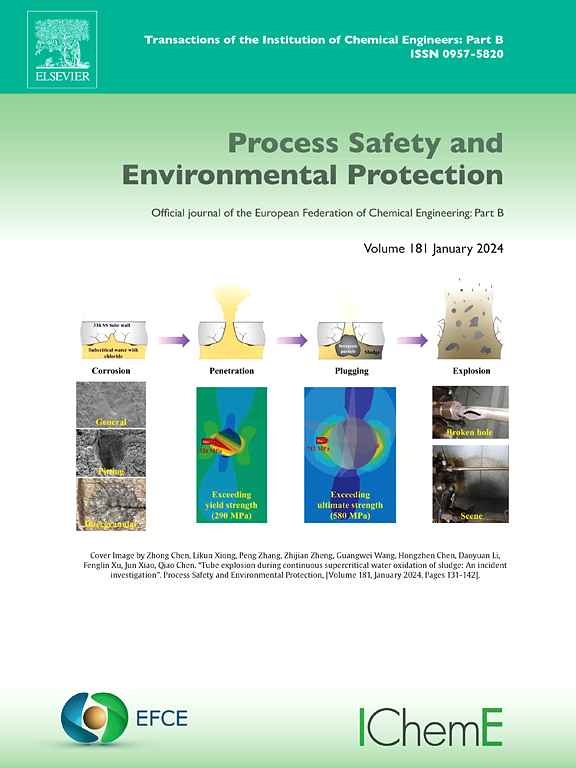Energy storage management in a near zero energy building using Li-ion, lead-acid, flywheel, and photovoltaic systems with TRNSYS simulation
IF 6.9
2区 环境科学与生态学
Q1 ENGINEERING, CHEMICAL
引用次数: 0
Abstract
In the present study, a dynamic analysis of a photovoltaic (PV) system integrated with two electrochemical storage systems, lithium-ion and lead acid batteries, and a flywheel mechanical energy storage system is investigated. Simulations are carried out using TRNSYS software. The considered PV system is installed at Pittsburgh University at Bradford in Pennsylvania, USA. A one-week-long data measurement is obtained for the installed PV system modules. The energy and exergy analyses are employed to evaluate the PV system efficiency. The average energy efficiency of the panel is calculated as 17.3 %, with a peak energy efficiency of 20.6 %. Furthermore, the average daily efficiency of the panel is calculated as 18.6 %, with the highest exergy efficiency of 22.2 %. The State Of Charge (SoC) variation is simulated dynamically, and the fluctuations are studied over the observed period. The inertial weight method is employed to achieve the optimal positioning of panels to maximize power output. The optimum angle of 6 degrees is obtained, which is consistent with locally installed panels. In addition, the study incorporates an economic analysis to estimate the total lifecycle cost of each storage system over a 15-year period, including initial investment, replacement, and operation and maintenance costs. A general review of the environmental performance of the storage systems is also conducted, identifying potential trade-offs between sustainability and energy storage efficiency. The results highlight the potential of PV systems integrated with optimized energy storage technologies to enhance the energy efficiency, sustainability, and cost-effectiveness of near-zero energy buildings (NZEBs).
求助全文
约1分钟内获得全文
求助全文
来源期刊

Process Safety and Environmental Protection
环境科学-工程:化工
CiteScore
11.40
自引率
15.40%
发文量
929
审稿时长
8.0 months
期刊介绍:
The Process Safety and Environmental Protection (PSEP) journal is a leading international publication that focuses on the publication of high-quality, original research papers in the field of engineering, specifically those related to the safety of industrial processes and environmental protection. The journal encourages submissions that present new developments in safety and environmental aspects, particularly those that show how research findings can be applied in process engineering design and practice.
PSEP is particularly interested in research that brings fresh perspectives to established engineering principles, identifies unsolved problems, or suggests directions for future research. The journal also values contributions that push the boundaries of traditional engineering and welcomes multidisciplinary papers.
PSEP's articles are abstracted and indexed by a range of databases and services, which helps to ensure that the journal's research is accessible and recognized in the academic and professional communities. These databases include ANTE, Chemical Abstracts, Chemical Hazards in Industry, Current Contents, Elsevier Engineering Information database, Pascal Francis, Web of Science, Scopus, Engineering Information Database EnCompass LIT (Elsevier), and INSPEC. This wide coverage facilitates the dissemination of the journal's content to a global audience interested in process safety and environmental engineering.
 求助内容:
求助内容: 应助结果提醒方式:
应助结果提醒方式:


